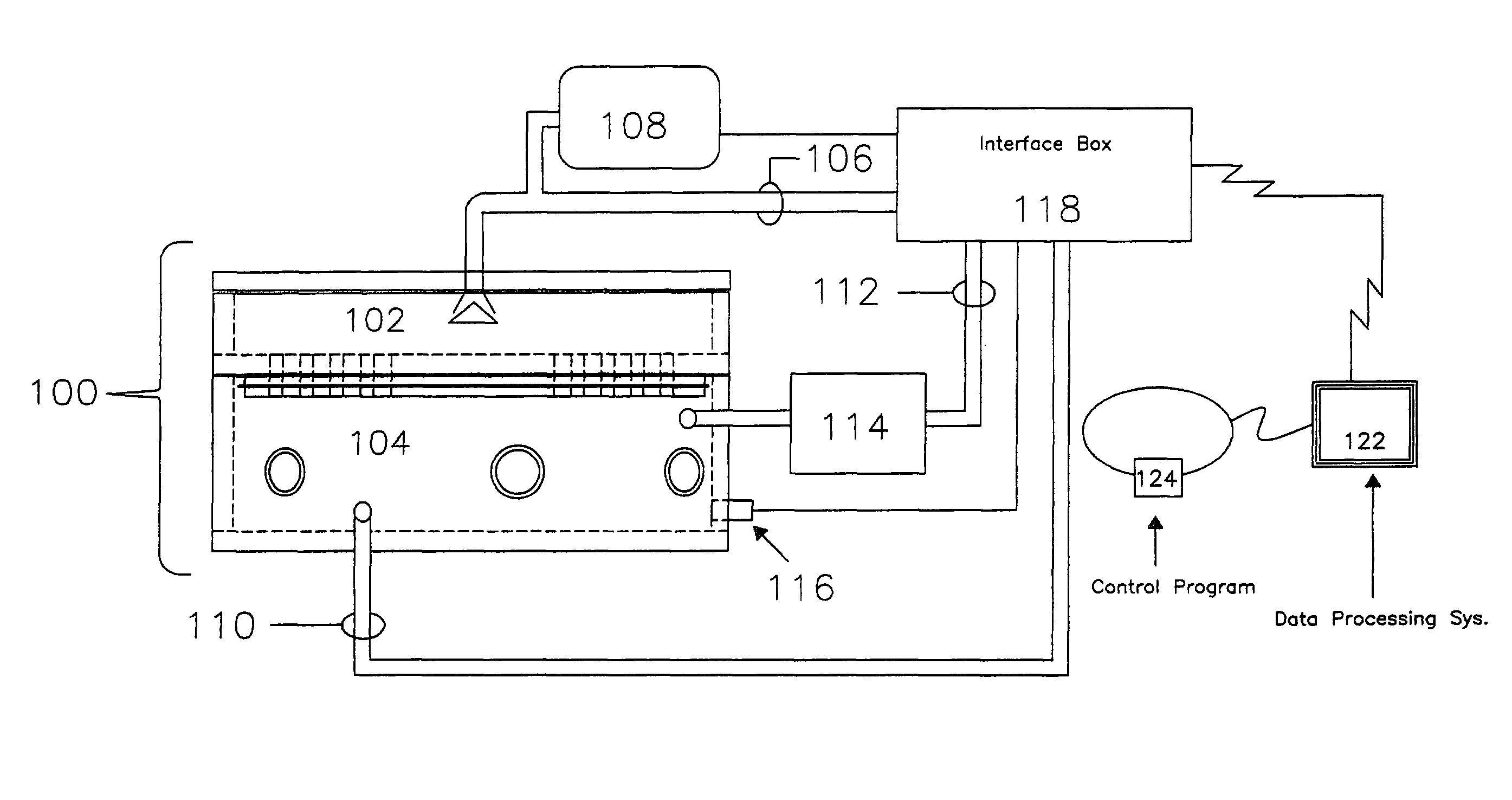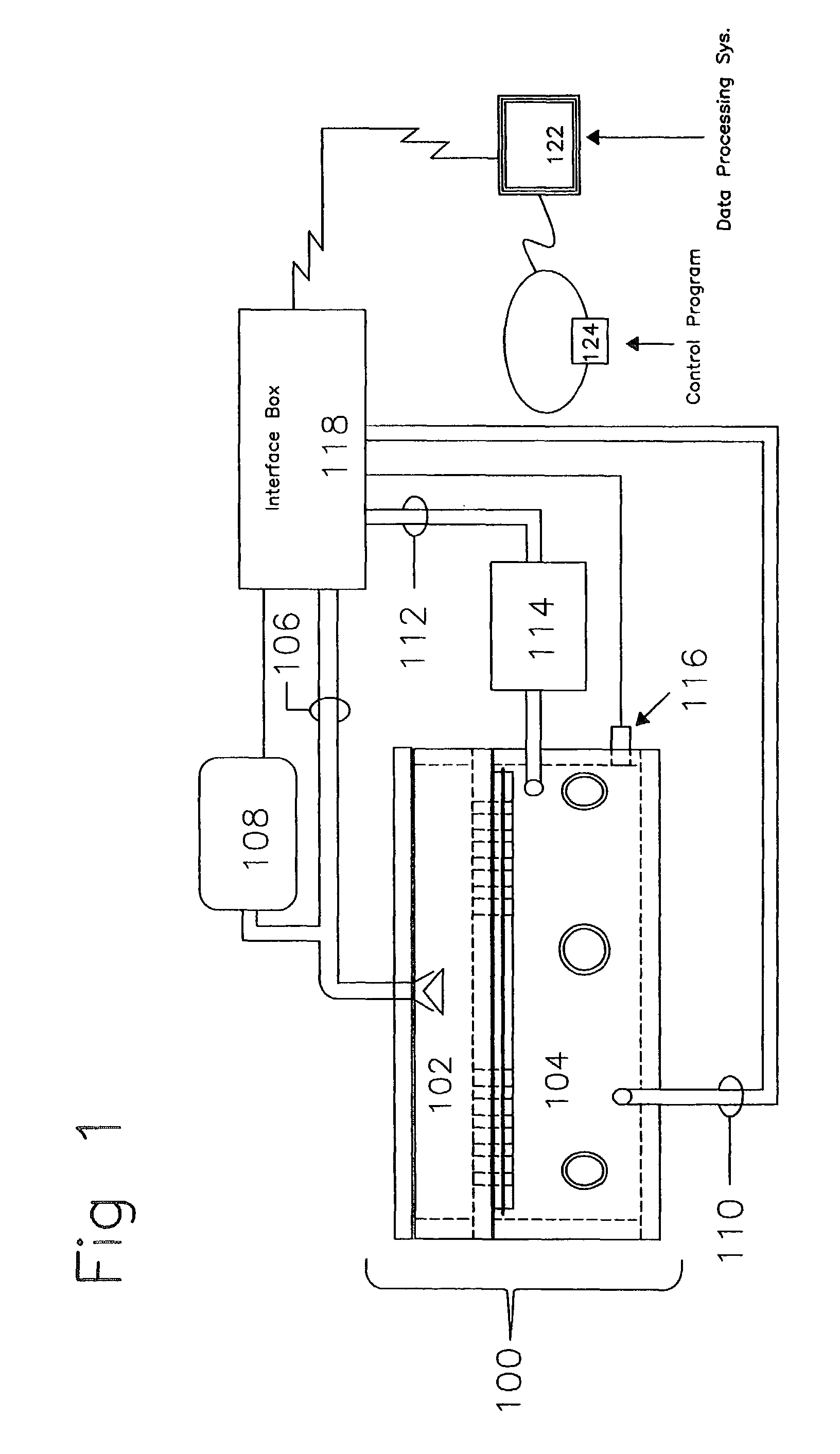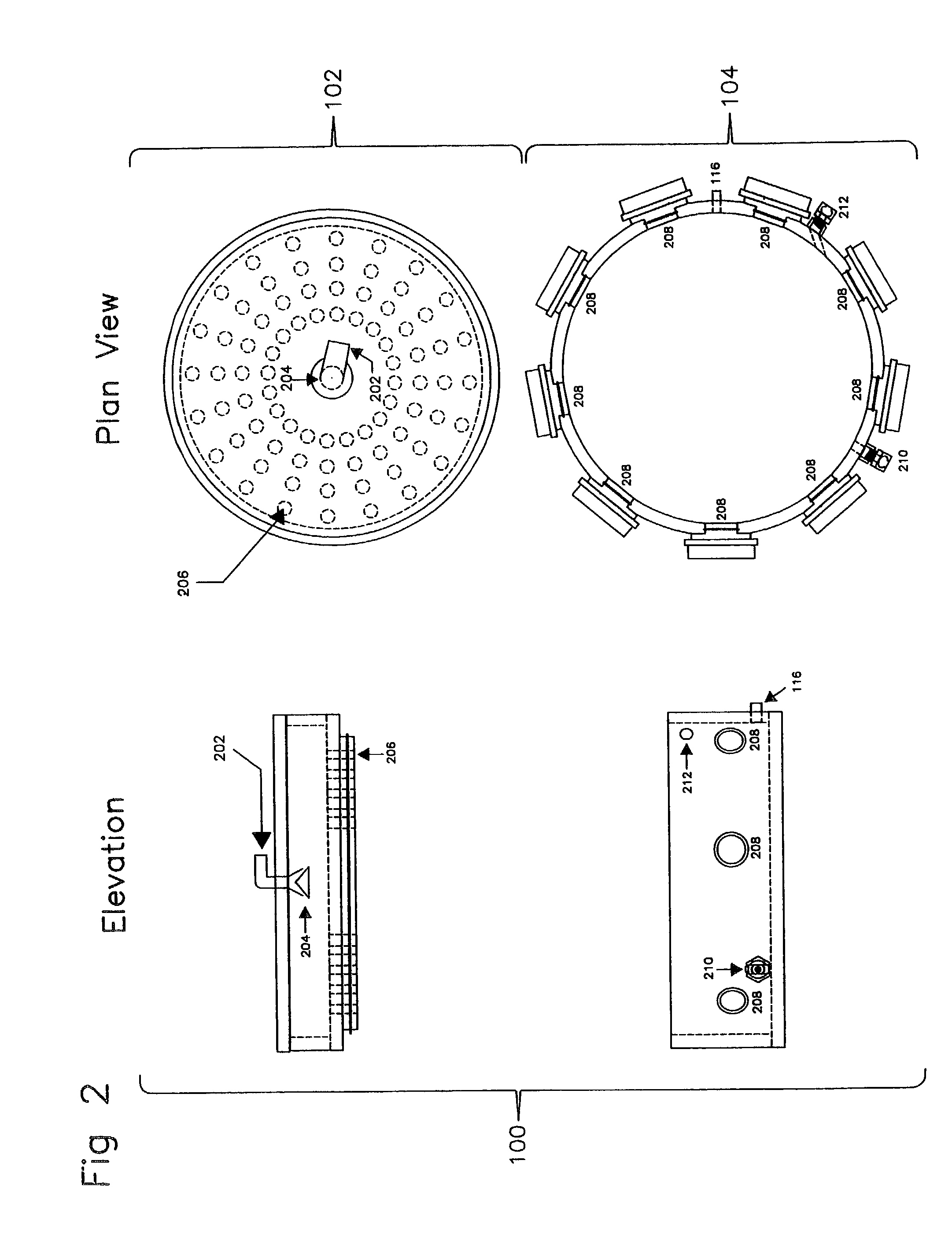Inhalation system and method
- Summary
- Abstract
- Description
- Claims
- Application Information
AI Technical Summary
Benefits of technology
Problems solved by technology
Method used
Image
Examples
Embodiment Construction
A. Introduction
[0026]The subject matter described herein entails a method and associated system for generating a cycle of dynamic and static test atmospheres designed to be used for aerosol characterization or exposing animals to all materials potentially aerosolized, but especially limited production materials such as new chemical entities or biologics. In one application, the method and system will greatly reduce the cost and time required for evaluation of precious materials under testing. The method and system include complete computer automated control (see herein incorporated by reference in its entirety U.S. Pat. No. 6,904,912 B2) of aerosol generation, characterization, and exposure duration and can be utilized with a variety of commercially-available aerosol generators, sampling devices, and material types.
[0027]1. System Hardware
[0028]A high level pictographic representation of an exposure system and associated hardware is included as FIG. 1. Depicted is exposure chamber 1...
PUM
 Login to View More
Login to View More Abstract
Description
Claims
Application Information
 Login to View More
Login to View More - R&D
- Intellectual Property
- Life Sciences
- Materials
- Tech Scout
- Unparalleled Data Quality
- Higher Quality Content
- 60% Fewer Hallucinations
Browse by: Latest US Patents, China's latest patents, Technical Efficacy Thesaurus, Application Domain, Technology Topic, Popular Technical Reports.
© 2025 PatSnap. All rights reserved.Legal|Privacy policy|Modern Slavery Act Transparency Statement|Sitemap|About US| Contact US: help@patsnap.com



